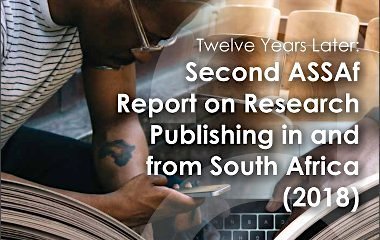Automation will make huge demands on universities
Australia’s surging economy is facing its biggest upheaval as automation eliminates jobs across the business and manufacturing sectors

01 Nisan 2019 - 07:32
Australia’s surging economy is facing its biggest upheaval as automation eliminates jobs across the business and manufacturing sectors.
Researchers say millions of workers will be displaced unless thousands more professionals, managers, technicians and associate professionals graduate from colleges and universities.A new report* on the dramatic impacts of automation paints a grim picture that is likely to apply equally to other advanced economies.
Prepared by researchers at McKinsey & Company, the global management consulting firm, the report says the widespread adoption of automation across the economy will be much more disruptive than most Australians expect.
An astonishing 46% of current work activities in Australia could be automated by 2030, the researchers say. But, they add, this could help drive “a renaissance in productivity, income and economic growth”.
Such a renaissance could mean a AU$4 trillion (US$2.8 trillion) boost to the economy over the next 15 years, providing every Australian with AU$4,000 to AU$15,000 a year in additional income by 2030.
According to the researchers, however, achieving these benefits depends on ensuring displaced workers can find new jobs, given that automation technologies will disrupt workforces across the country.
They estimate that up to 6.5 million full-time positions could be affected, with as many as five million workers forced to change their professions.
Automation could also exacerbate current mismatches between the skills of future graduates and Australia’s labour market needs.
For example, there may be an oversupply of vocational education and training graduates with engineering or business skills highly susceptible to automation.
At the same time, Australia could face a shortage of 600,000 university graduates by 2030 in health, education and information technology.
Also needed are highly trained postgraduate engineers who know how to develop and work with new technology.
Automation impact widespread
The researchers point out that many more people will be affected by automation than most believe. Not only those who perform routine manual work, but also others in “predictable, data-heavy analytical areas” such as engineering, accounting and even computing.
“People who can acquire new skills will flourish in their existing roles and in roles yet to be defined; others will find it much harder.”
Governments and institutions that manage the transition poorly could see increased inequality and they risk a public backlash and political instability.
“We need to act now. Australia has lost its late 20th century reform momentum and is falling behind on innovation, digitisation and productivity compared to the rest of the world,” the report states.
As automation technologies take over more routine, predictable and physical activities, the mix of skills required in all jobs will shift.
This could mean more opportunities for women with children, older workers and people with a disability.
In any case, those who have jobs will spend 60% more time using technological skills and 40% using “social and emotional skills”.
The researchers say that automation will have a significant impact on jobs, with the unemployment rate jumping by up to 2.5% from the current 5% to 7.5%.
“Without retraining for vulnerable workers, especially administrative and manual workers and those in vulnerable regions, income inequality could widen by up to 30%,” the researchers say.
No robot armies
Automation, however, is not the harbinger of robot armies and mass unemployment, say the researchers.
“While it may seem counter-intuitive, automation holds great promise for Australia and could help to rekindle the kind of economic growth that delivers higher living standards and more choices for everyone.”
Yet, they say that too many people feel the long economic boom has been “someone else’s story”.
“Even if employed, they worry about housing affordability, the vagaries of part-time work and their family’s future. And, when they hear about automation technologies like artificial intelligence or robotics, they understandably see a threat rather than an opportunity.”
The report offers an alternative view: Not only could automation reignite income growth for all Australians, it could also help the country “navigate the headwinds of an ageing population”.
“If we can embrace automation in the national interest, businesses can develop new services and products, boost productivity and create new and better-paying jobs, keeping employment levels high and creating the national wealth that can promote social inclusion,” the report says.
Newcomers to the workforce
People who are currently in school, post-secondary education or training programmes will account for around one-third of Australia’s workforce by 2030. The skills they will need for their roles will change significantly as a result of automation.
“These new skills could be embedded in education courses now, rather than added when Australia is in the midst of job disruption, when the horse may already have bolted,” the report says.
Flexible short certificate courses and foundational training are also likely to be the most valuable for workers who lose jobs through structural changes.
Universities need leaders who can communicate the need to modernise course design and delivery and drive its implementation, the report says.
Teachers also need new skills to make the best use of technology through enhanced coursework, personalised materials and learning experiences, and interactive simulations.
*Australia’s Automation Opportunity: Reigniting productivity and inclusive income growth. Charlie Taylor, Jules Carrigan, Hassan Noura, Seckin Ungur, Jasper van Halder and Gurneet Singh Dandona; McKinsey & Company; March 2019.







YORUMLAR